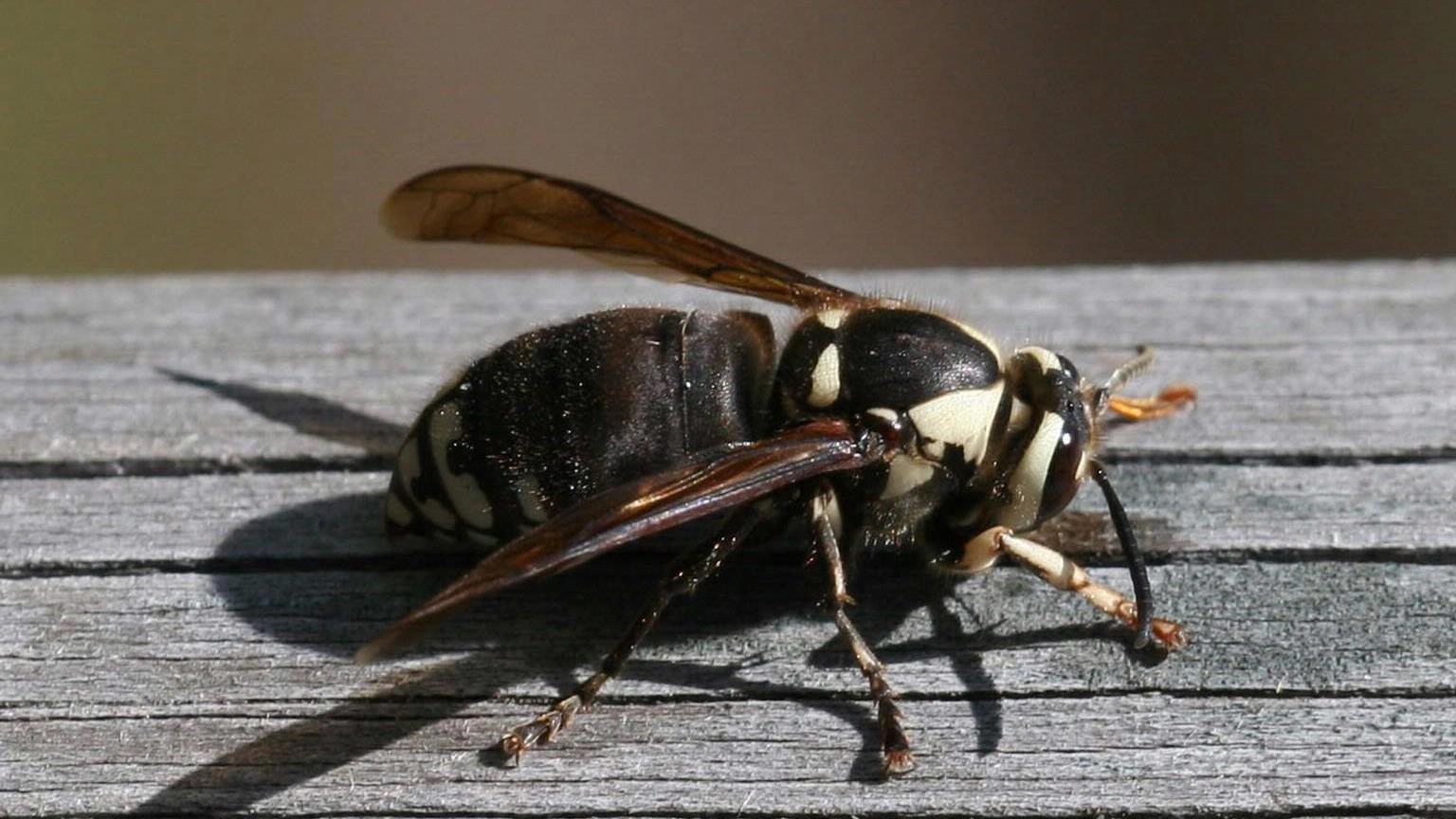Baldfaced Hornet: Dangerous bug or beneficial insect?

MACOMB, Ill. — Winter may be an odd time to read about an insect only seen during the warmer months. Yet, I can’t help but marvel at the architecture of the baldfaced hornet’s nest, which has been revealed in the canopy of trees after leaf drop.
This winter, I have seen several baldfaced hornet nests in trees. The nest itself is a beautiful oblong structure that is papery and grayish but, if inspected closely, has waves of dark and light colors washing over its surface.
Incredible to think each of these nests begins with one individual, the queen. A single queen hatched the year before overwinters in a protected space like leaf litter or nestled behind shaggy tree bark, even in an attic. Once spring arrives, the queen sets about to find the perfect spot to build her colony. Nests are at least three feet off the ground but often higher in tree canopies. She may pick a large shrub, tall tree, under the eaves of a building or other protected location.
Once a proper location is selected, the queen must source her building material. Rotting wood offers cellulose, which she chews and mixes with her saliva to create a papery material for nest construction. The initial shape of the bald-faced hornet nest in early spring has a rounded ball shape on top with a tube extending downward where she and her offspring will enter and leave from.
The queen will lay eggs in newly built brood cells, and her young will assume the duties of nest building, food collection, feeding, and guarding the nest. By the end of the summer season, her nest may contain more than 300 offspring and takes on an oversized football shape.
Baldfaced hornets are not hornets at all. They are yellowjackets. However, they look very different from the yellowjackets we often encounter nesting in the ground. Baldfaced hornets are mostly black with white markings which are more pronounced on their face.
All yellowjackets defend their nests, but since baldfaced hornet nests are often out of reach for most humans, we tend not to have as many negative encounters with them. They are beneficial insects, consuming other pests including fighting with the ground-nesting yellowjackets. Entomologists have observed the inside of the baldfaced hornet nests are sometimes yellow as they are filled with the remains of the ground-nesting yellow jackets. Baldfaced hornets also act as pollinators.
As the summer turns to fall, the queen births the next generation of queens who will leave the nest, find their overwintering spot and begin the process again next year. The colony itself dies at the first hard frost. The nest continues to provide shelter and food for other wildlife as birds will tear the nests apart over the winter consuming dead insects.
Many people live in fear of wasps and yellowjackets. A common question at the Extension office is, “How do you get rid of a bald-faced hornet nest?” My response is, “Do you need to?”
If you have an allergy to bee/wasp stings and the nest is close to a door or walkway, then hiring a pest control professional may be the way to go. Baldfaced hornet nests are seen everywhere this winter, including one in a tree right over where I drop my kid off in front of the school. Yet, it was unnoticed until winter. We had a nest over our patio in the red maple tree. It was there all summer, but we had no idea.
Hopefully, this article has brought a bit of understanding to an often-maligned creature that with knowledge will come respect and marvel at the wondrous creatures with which we share this planet.
Miss Clipping Out Stories to Save for Later?
Click the Purchase Story button below to order a print of this story. We will print it for you on matte photo paper to keep forever.
